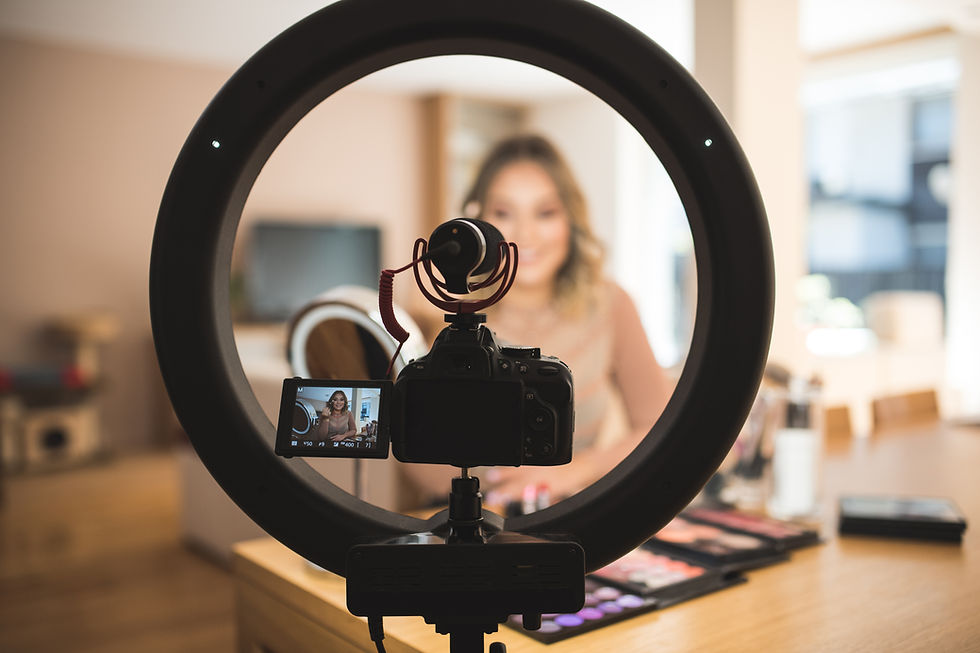The Best Types of Content for Real Estate Advertising
- Lorica Marketing
- Mar 22
- 4 min read
The real estate industry is competitive, and standing out requires more than just putting a “For Sale” sign in a yard. Marketing properties effectively means creating content that grabs attention, resonates with potential buyers, and builds trust with your brand. But if you're a real estate agent, you might be asking, "What type of content works best for real estate advertising?" Here’s a guide to the most effective types of content and how you can use them to elevate your marketing game.

1. High-Quality Listing Photos
First impressions matter, and in real estate, they happen visually. High-quality photos of listings are an absolute must for advertising. Invest in a professional photographer who understands lighting, angles, and staging to showcase your properties in their best light.
Why it works:
93% of buyers look at property photos first when browsing listings online.
Clear, professional photos highlight features and create an emotional connection with buyers.
Pro Tip: Create a checklist for staging homes to ensure every photo looks polished and inviting.
2. Video Tours and Walkthroughs
Video tours are transforming how properties are advertised. Whether it’s a cinematic walkthrough or a raw, unfiltered behind-the-scenes view, video content helps prospective buyers envision themselves in the space.
Why it works:
Buyers can explore the layout and features without needing to visit in person.
Videos perform better on social media, generating higher engagement rates compared to still images.
Pro Tip: Use a drone to capture aerial shots of the property and surrounding neighborhood to give buyers a broader perspective.
3. Virtual Tours and 360° Content
With the rise of virtual reality (VR) and augmented reality (AR), virtual tours are becoming the gold standard in real estate marketing. Platforms like Matterport make it easy to create immersive, interactive 3D virtual tours.
Why it works:
Offers potential buyers a realistic feel of the home, even from miles away.
Builds trust with out-of-town buyers who can’t attend open houses.
Pro Tip: Add hotspots within the tour to showcase unique features like appliances, built-in shelving, or newly renovated areas.
4. Engaging Social Media Content
Social media is one of the most effective platforms for real estate advertising. Platforms like Instagram and Facebook allow real estate agents to connect directly with their audience while showcasing properties.
Why it works:
It’s cost-effective and allows for real-time engagement.
Stories, reels, and posts can creatively showcase properties and build your personal brand.
Examples:
Sneak peeks of newly listed properties.
"Just Sold!" posts featuring happy buyers (with permission).
Educational posts like "Tips for First-Time Buyers" or "Why Staging Matters."
Pro Tip: Don’t forget TikTok! It’s a rapidly growing platform where creative property tours and real estate advice are thriving.
5. Informative Blog Posts
Position yourself as an authority in real estate with valuable and informative blog content. Blogging helps answer common questions, educates your audience, and improves your website’s SEO.
Examples of blog topics:
"How to Prepare Your Home for Sale in [Your City]."
"5 Red Flags to Watch For When Buying a Home."
"The Benefits of Hiring a Real Estate Agent."
Why it works:
Blogs drive organic traffic to your website.
They show potential clients your expertise and dedication to helping them.
Pro Tip: Use clear, simple language and include plenty of visuals like graphs, charts, or images to make the content engaging.
6. Email Newsletters
Email marketing helps nurture relationships with past, present, and potential clients. A well-designed email campaign can share the latest property listings, market updates, and useful tips directly with your audience.
Why it works:
Email marketing delivers the highest ROI of any digital channel.
Personalized emails can grab your reader’s attention and keep your business top-of-mind.
Pro Tip: Use segmentation to tailor emails based on your audience's preferences (e.g., buyers vs. sellers).
7. Testimonial Content
Nothing builds trust like hearing from past happy clients. Testimonials, in the form of video interviews, quote cards, or case studies, show potential clients the value and quality of your service.
Why it works:
Builds credibility and social proof.
Helps humanize your brand and establish trust with future clients.
Pro Tip: Turn written testimonials into short videos by overlaying text with clips of yourself or happy clients.
8. Neighborhood Guides and Local Content
Buyers aren’t just purchasing a property—they’re investing in a lifestyle. Highlight what makes the neighborhood special with guides, videos, and articles about local schools, restaurants, parks, and community events.
Why it works:
Shows your expertise about the local area.
Helps buyers imagine their life in the new community.
Examples:
"Top 5 Family-Friendly Neighborhoods in [City]."
"Living in [City]: Best Restaurants, Schools, and Parks."
Pro Tip: Partner with local businesses to cross-promote content and reach a broader audience.
9. Explainer Content About the Buying/Selling Process
Real estate can be overwhelming, especially for first-time buyers or sellers. Content that simplifies the process can position you as a trusted advisor while helping clients feel confident.
Why it works:
Helps demystify a complex process and reduce anxiety.
Shows your willingness to educate potential clients, building trust and rapport.
Pro Tip: Create short explainer videos covering FAQs, such as “What Costs Are Associated with Buying a Home?” or “How Do I Prepare for a Home Showing?”
10. Exclusive Deals and Limited-Time Offers
Catch the attention of your audience with exclusive deals, promotions, or services. These offers could include free market analysis reports, discounted home staging, or a free gift card for referrals.
Why it works:
Creates a sense of urgency and excitement.
Rewards customer loyalty and recommendations.
Pro Tip: Run seasonal campaigns, like “List Your Home with Us This Summer and Get a Free Staging Consultation!”
Final Thoughts
Effective real estate advertising requires the right mix of content types tailored to your audience and business goals. From captivating listing photos to informative blogs and immersive virtual tours, the options are endless. By leveraging diverse content marketing strategies, you can attract clients, build trust, and close more deals.
Now it’s time to level up your real estate advertising game. Start small—pick two or three content types that make sense for your business and audience. Then, focus on consistency and quality to see the best results.
Happy Selling!





Comments